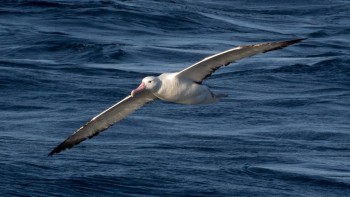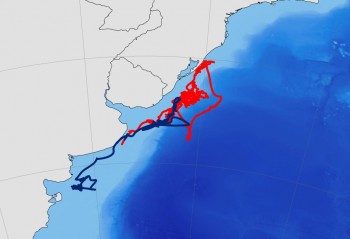As part of the Large Marine Vertebrate project (Grandes Vertebrados Marinos), the Laboratorio de Recursos Pelágicos of the Dirección Nacional de Recursos Acuáticos (DINARA) from Uruguay has equipped several species of large marine vertebrates, including sharks, tunas and sea turtles, and more recently seabirds with tracking devices.
In early July 2016 ACAP-listed Southern Royal Albatrosses Diomedea epomophora were equipped with satellite transmitters from on board the research vessel R.V. Aldebarán in Uruguayan waters. Three individuals, one female and two males, have been tracked for nearly two months, providing novel data on the movements of these seabirds during the non-breeding period. One week after being equipped one male began his migration back to Australasia, travelling across the Atlantic and Indian Oceans for about 20 days to reach a well-defined area east of the Great Australian Bight. To date, the two other birds have remained in the south-western Atlantic: one bird has utilized waters on the continental shelf of Uruguay and Argentina, while the other has mainly stayed in waters off southern Brazil and Uruguay.

Southern Royal Albatross at sea
Read about the Uruguayan research in Spanish here.
With thanks to Andrés Domingo and Sebastián Jimenez.
Juan Pablo Seco Pon, ACAP News Correspondent, 14 September 2016

 English
English  Français
Français  Español
Español 
